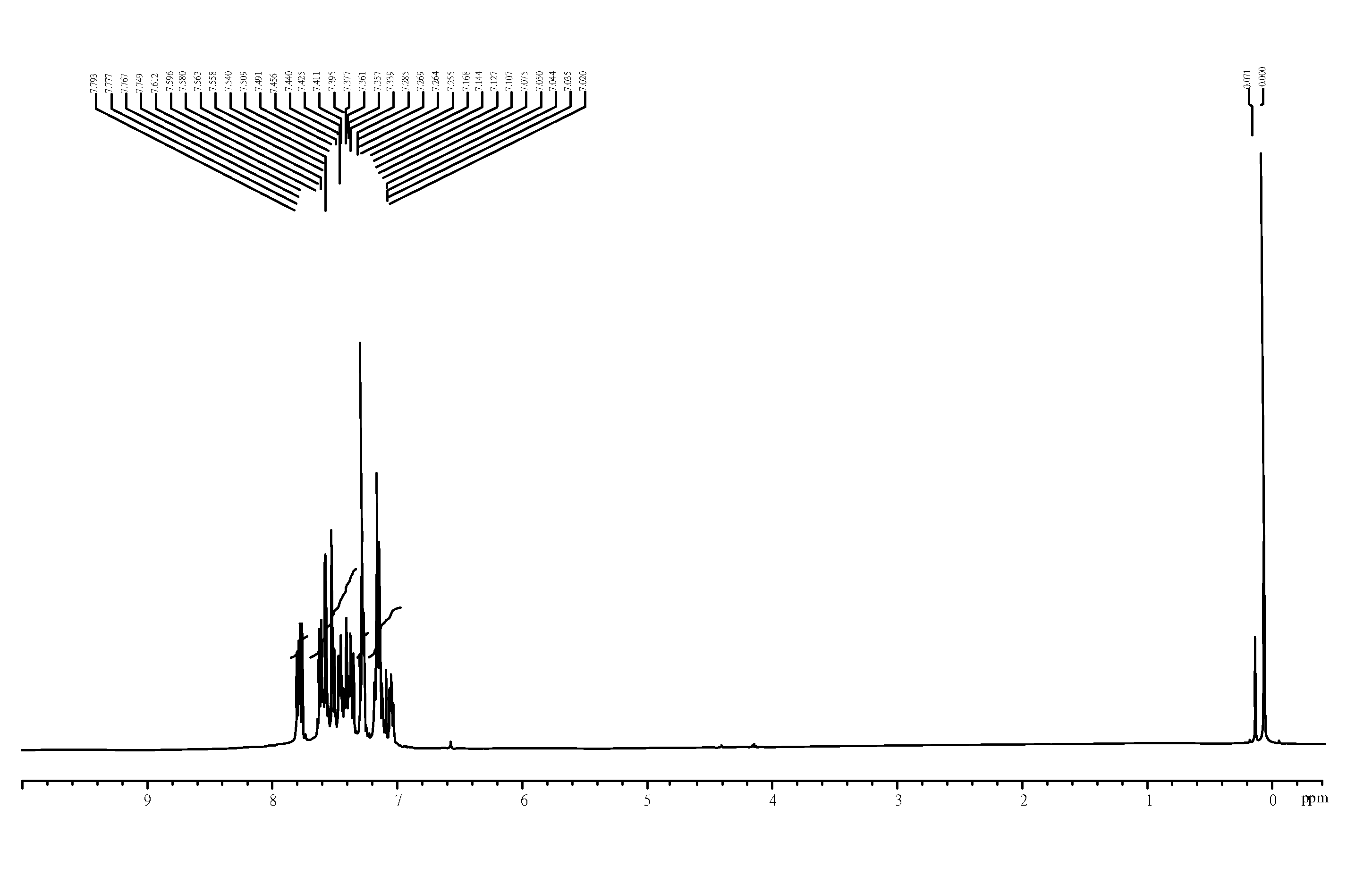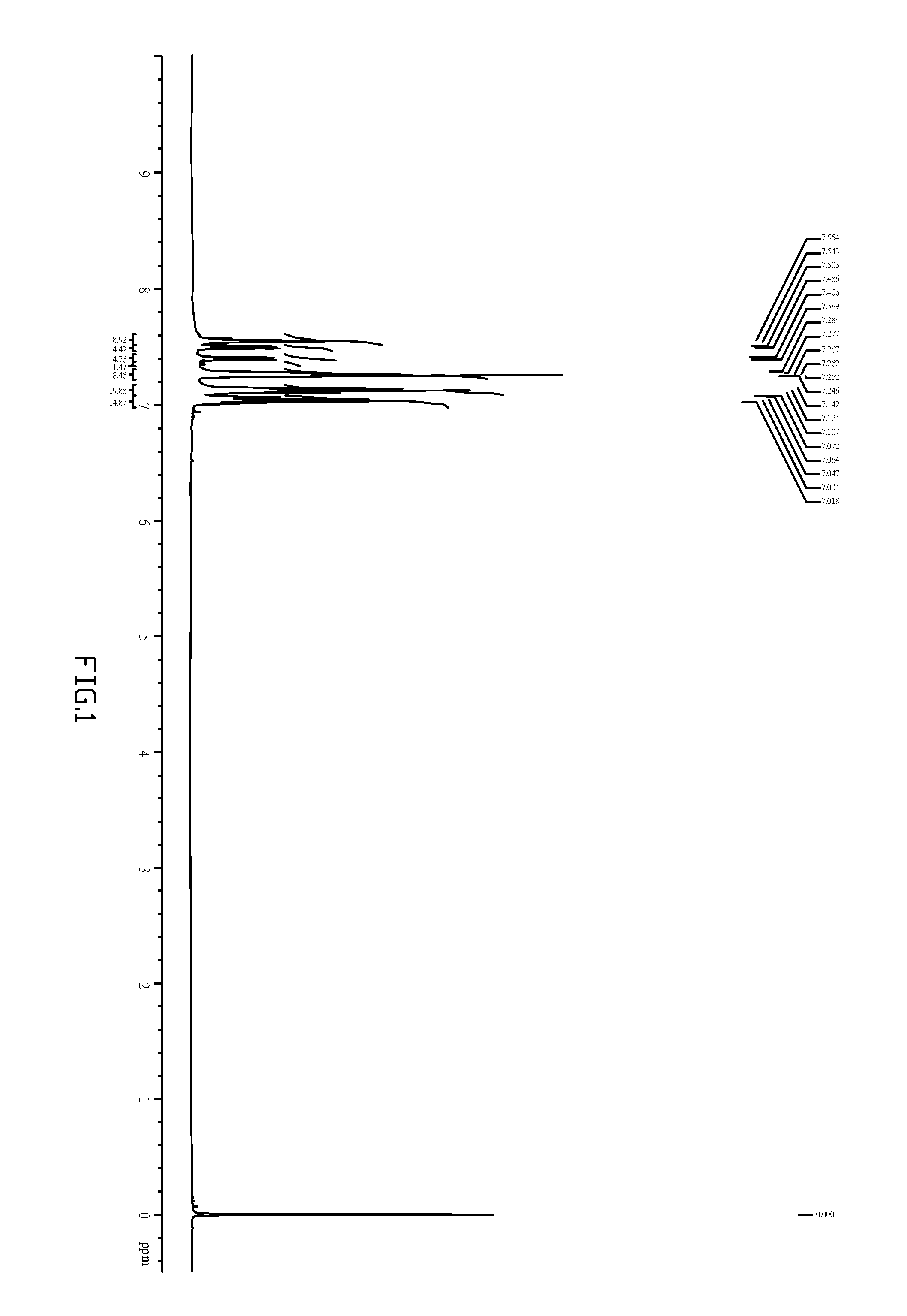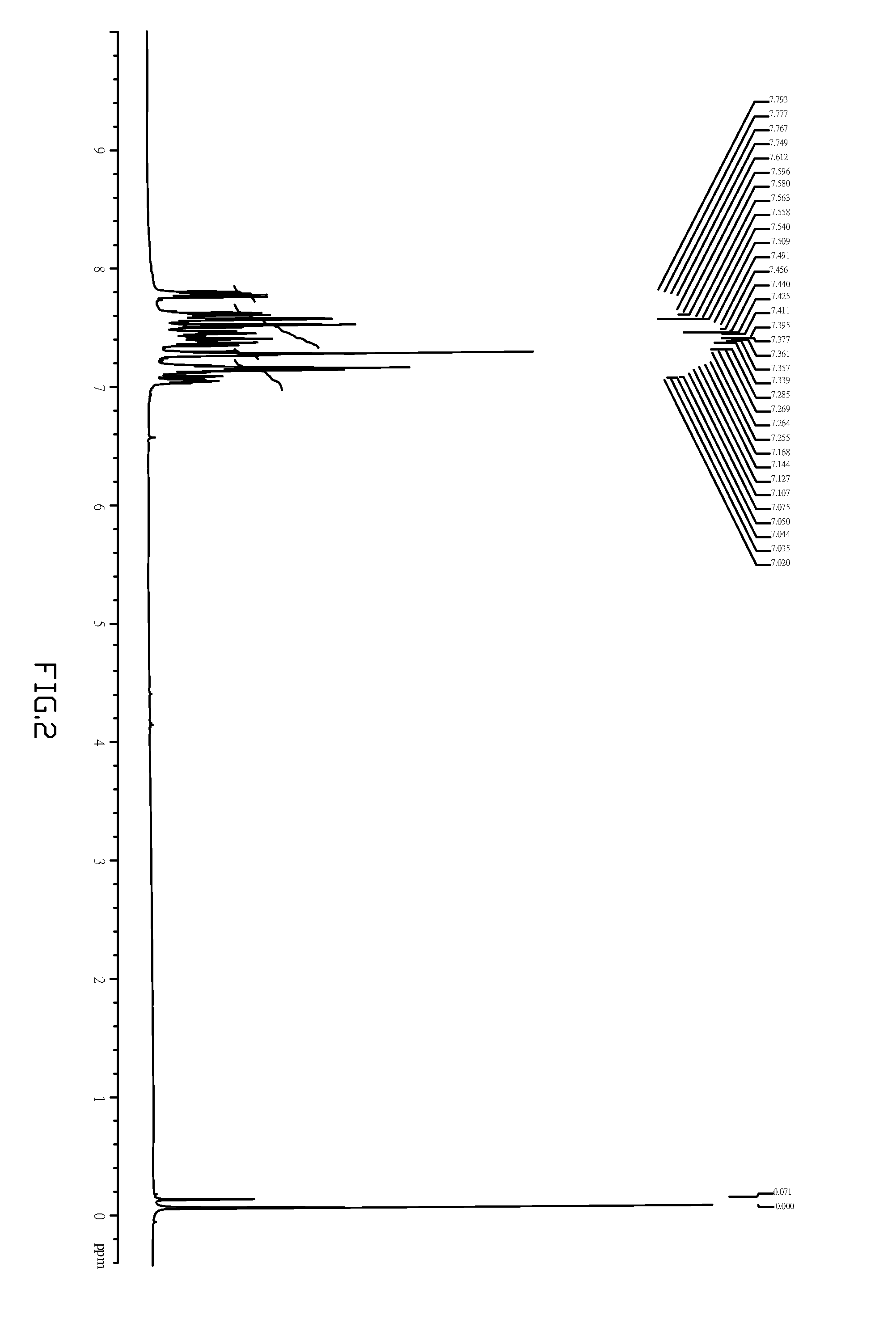Novel blue organic compound and organic electroluminescent device using the same
a technology of organic compound and electroluminescent device, which is applied in the direction of organic chemistry, solid-state devices, thermoelectric devices, etc., can solve the problems of little attention to their work, and achieve the effect of improving the efficiency of emission and long service life of the device, and reducing the generation of non-emission mechanisms
- Summary
- Abstract
- Description
- Claims
- Application Information
AI Technical Summary
Benefits of technology
Problems solved by technology
Method used
Image
Examples
embodiment 1
Preferred Synthetic Method and Route of Compound (I)-1
[0030]
[0031]Synthetic Method of Medium (A):
[0032]Fetch a 100 ml triple-neck flask and add 25.8 g of 4-bromobenzyl bromide (0.1 mole) and 35 ml (0.2 mole) of triethyl phosphite and heat by circulation the flask at an temperature of 200° C. for 24 hours. Upon is achieving complete reaction, extra triethyl phosphite and product are fractionally distilled at a reduced pressure to avail 27.6 g of product at a production rate of 90%.
[0033]Synthetic Method of Medium (B):
[0034]Add into a 100 ml tri-neck flask 2 g (6.41 mmole) of 4,4′-dibromobiphenyl and 20 ml of dehydrated THF, and slowly drip 3.93 ml (6.41 mmole) of n-butyllithium solution (1.63M of hexane solution) in the presence of nitrogen at −78° C. Wait for thirty minutes upon completing the drip of n-butyllithium solution before slowing adding 20 ml of DMF to allow reaction temperature to gradually return to room temperature, followed with blending for two hours. Pour the soluti...
embodiment 2
Preferred Synthetic Method and Route of Compound (I)-10
[0039]
[0040]Synthetic Method of Medium (D):
[0041]Add into a 250 ml tri-neck flask 10 g (31 mmole) of 4-bromophenyl-diphenylamine, 100 ml of toluene, 10 ml of ethanol, 7.6 g (37.8 mmole) of 4-formylbenzeneboronic acid, 50 ml water solution of 2M soliem carbonate and 1.08 g (0.935 mmole) of tetrakis(triphenylphosphine)palladium(0) to be heated in circulation for 12 hours, extracted with ethyl acetate, added with proper amount of dehydrated magnesium sulfide, and concentrated to undergo ethanol bath for brown solids to avail 9.6 g of yellow solids at a production rate of 89%.
[0042]Synthetic Method of medium (E):
[0043]Dissolve 6 g (17.2 mmole) of the medium (D), 4.8 g (15.6 mmole) of the medium (A), and 2.7 g (24.1 mmole) of KOtBu in a 150 ml tri-neck flask containing 80 ml of DMF, and blend the solution for 24 hours at room temperature; upon the reaction is completed, pour reactants into a solution of methyl alcohol and water mixe...
embodiment 3
Preferred Production and Measurement of a Compound (I)-1 Based Device
[0047](a) Rinse and oven dry an ITO glass with detergent and organic solution, then have a surface of the ITO glass plasma processed before being conducted with CHF3 gas to treat the surface of the ITO with a plasma processor, a resultant CFx film functions as the electric hole implantation; and finally, the substrate is given organic film vapor disposition in a highly vacuumed environment.
[0048](b) Have the electric hole transmission layer of (4,4′-bis[N-(1-naphthyl)-N-phenyl-amino]-biphenyl (NPB) vapor disposed in a thickness of 500 Å on the CFx coated ITO surface.
[0049](c) Have both of the primary emission (II)-5 and the compound (I)-1 vapor disposed on the NPB layer to form a 400 Å emission layer, wherein, a ratio of the compound (I)-1 to the compound by volume is 7%.
[0050](d) Have the electronic transmission layer, tris(8-quinolinol)aluminum (Alq3) vapor disposed in a thickness of 100 Å on the emission layer.
[...
PUM
| Property | Measurement | Unit |
|---|---|---|
| external quantum efficiency | aaaaa | aaaaa |
| luminance | aaaaa | aaaaa |
| temperature | aaaaa | aaaaa |
Abstract
Description
Claims
Application Information
 Login to View More
Login to View More - R&D
- Intellectual Property
- Life Sciences
- Materials
- Tech Scout
- Unparalleled Data Quality
- Higher Quality Content
- 60% Fewer Hallucinations
Browse by: Latest US Patents, China's latest patents, Technical Efficacy Thesaurus, Application Domain, Technology Topic, Popular Technical Reports.
© 2025 PatSnap. All rights reserved.Legal|Privacy policy|Modern Slavery Act Transparency Statement|Sitemap|About US| Contact US: help@patsnap.com



